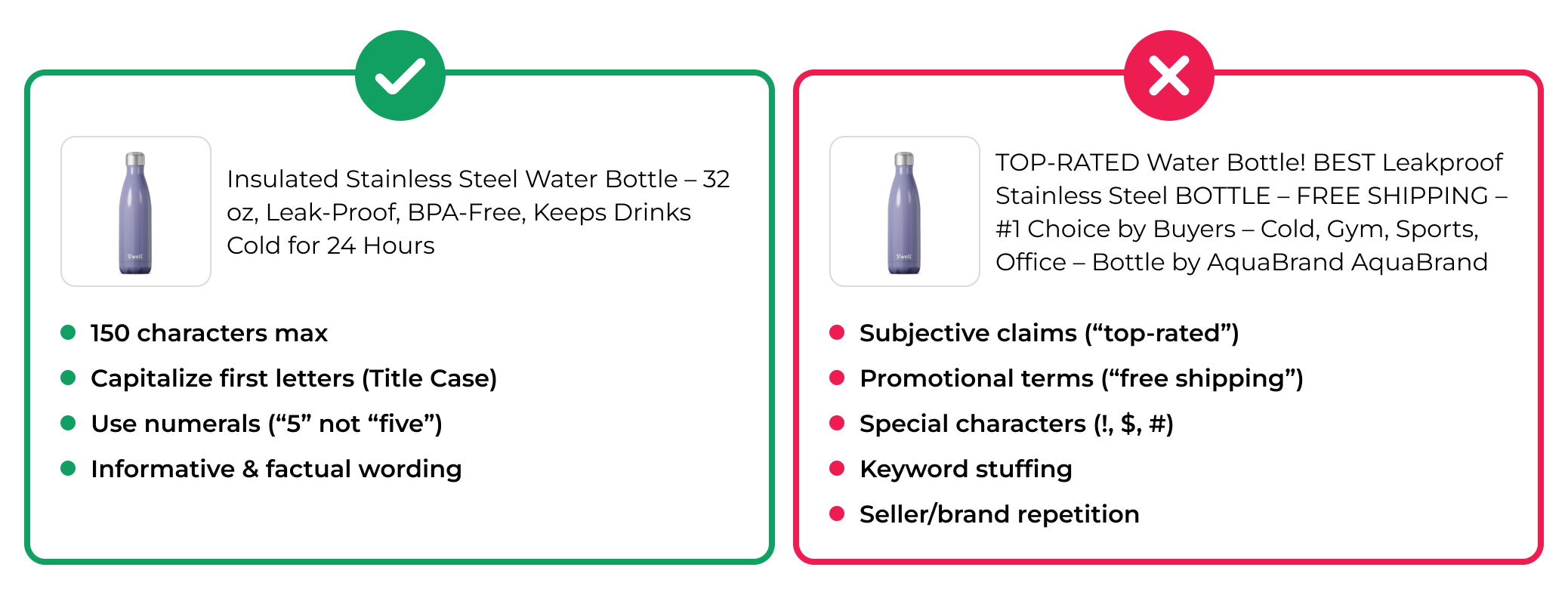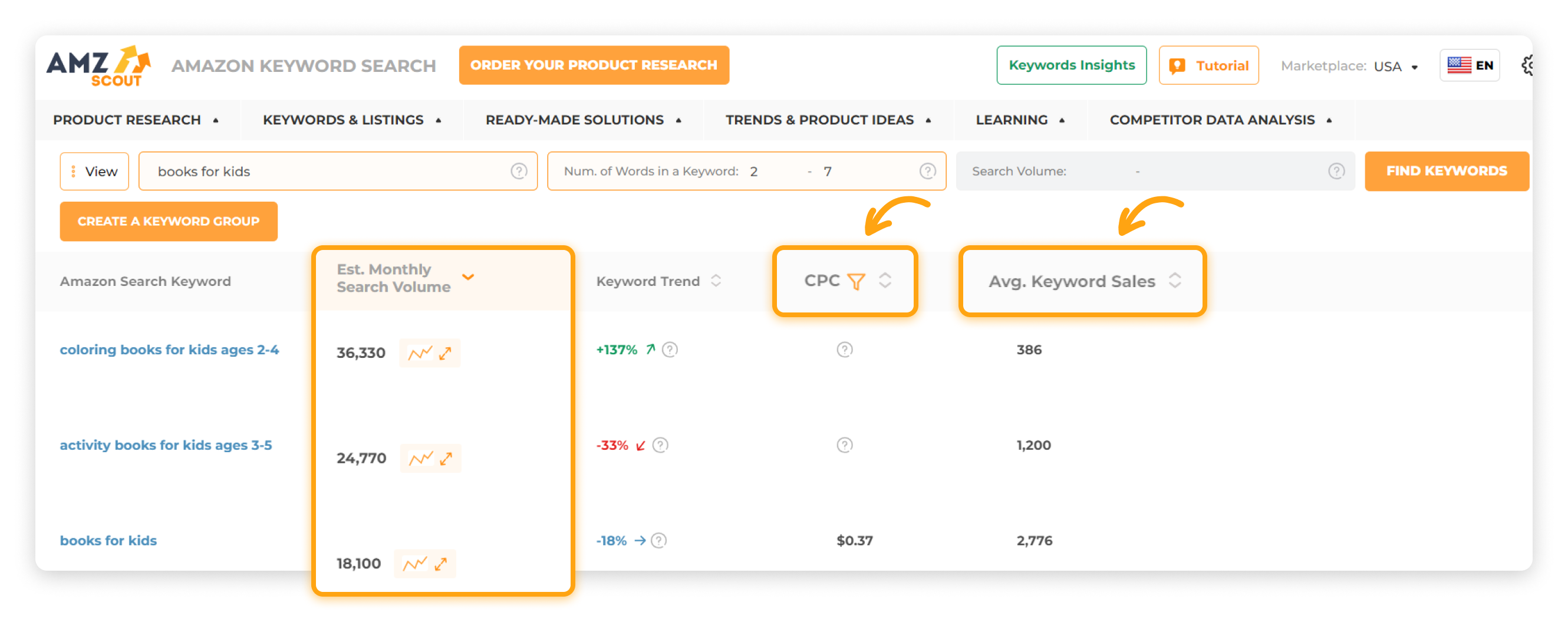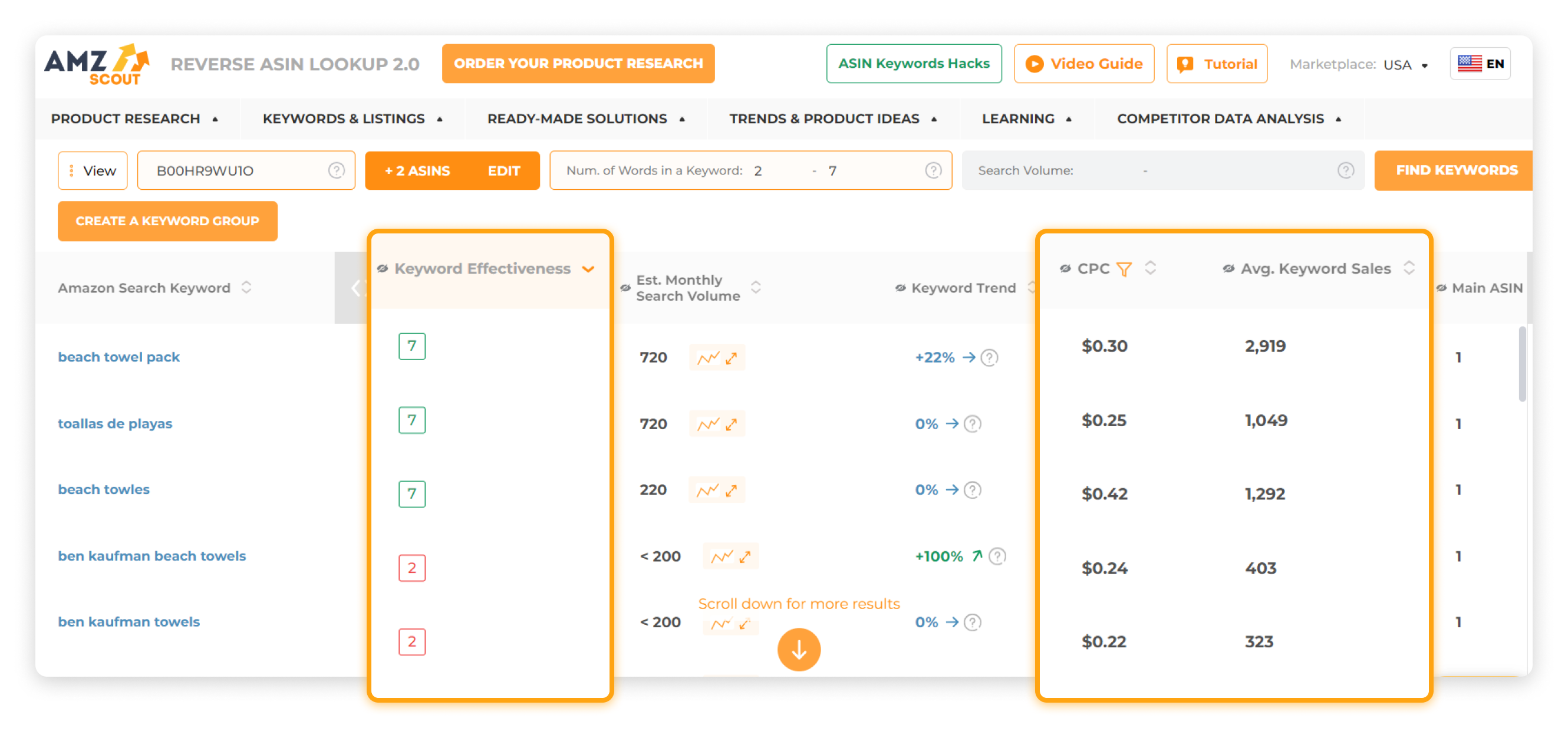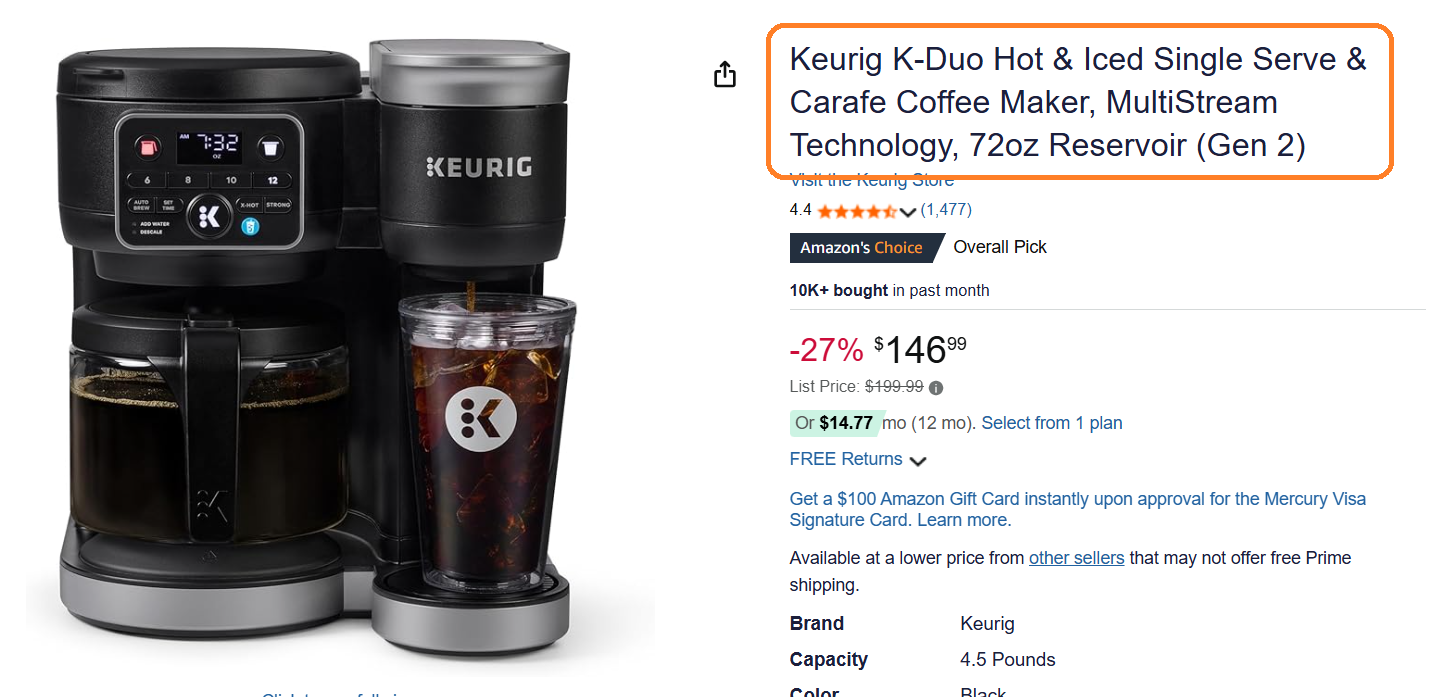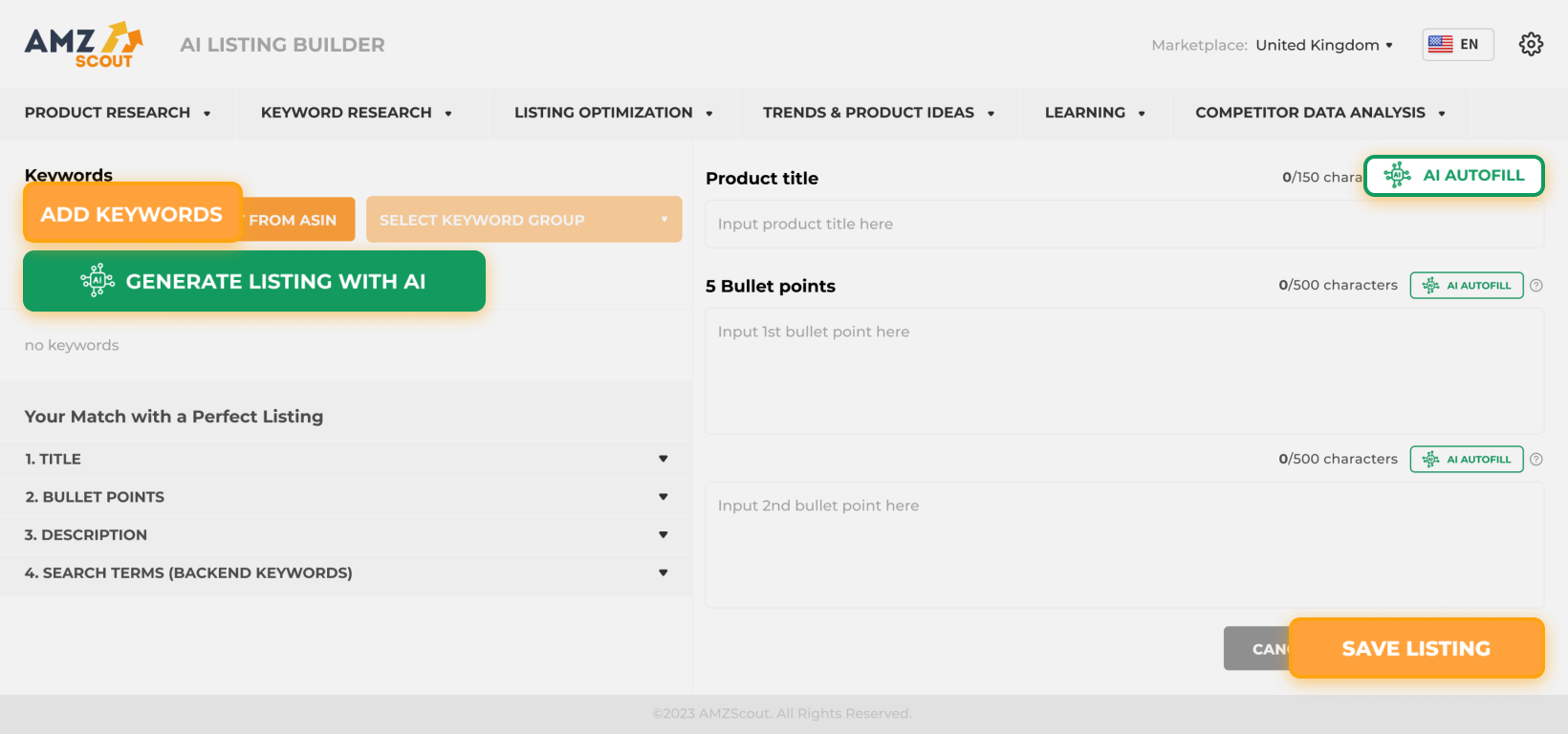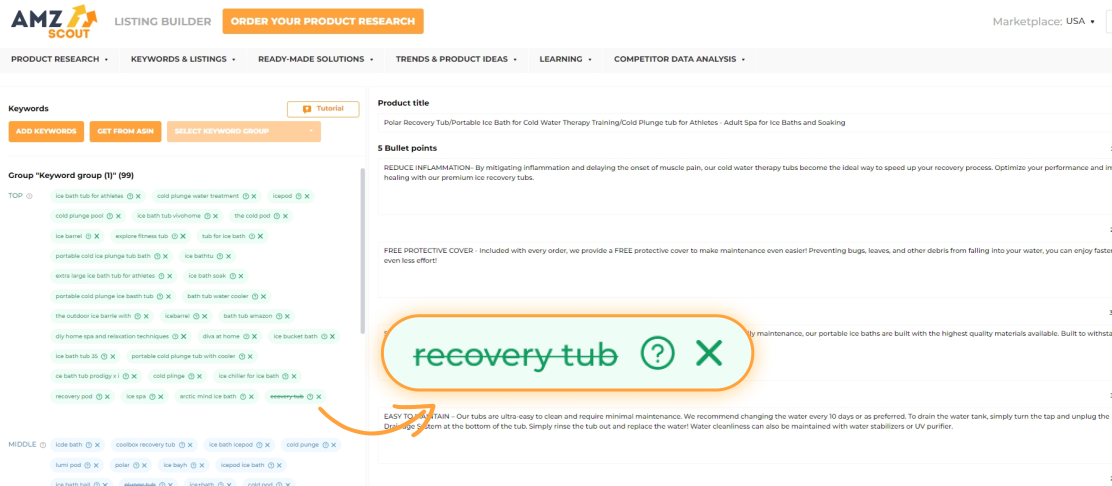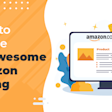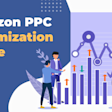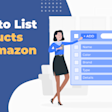
How to Optimize Amazon Product Titles in 2025
Your Amazon product title isn’t just a headline—it’s your first, and often only shot at standing out in a crowded marketplace. In 2025, with competition fiercer than ever, mastering product title optimization is essential for improving your search rankings, boosting click-through rates, and ultimately generating more sales.
Whether you're new to the process of product listing optimization or looking to refine your strategy, understanding Amazon’s evolving product title guidelines, including character limits, keyword placement, and best practices, can make all the difference. In this guide, we’ll break down exactly how to optimize your Amazon product title using proven techniques that maximize your product page’s visibility and performance.
Table of contents
Understanding Amazon’s Product Title Guidelines
Before we dive into optimization techniques, it’s crucial to understand Amazon’s product title guidelines—especially since they underwent a noteworthy update in January 2025. Following these rules isn’t just about compliance; it’s also the foundation for creating high-performing, search-friendly product listings that enhance visibility and conversions.
Character Limits
As of 2025, Amazon has standardized their product title character limit to 150 characters for most categories. However, it’s also worth noting that some specific categories may require shorter titles (often 80–100 characters), so always check for any category-specific requirements in Seller Central. Staying within this limit ensures that your title is displayed correctly across both desktop and mobile devices, improving user experience and listing quality.
Formatting Rules
Clean, readable formatting is a must. Be sure to capitalize the first letter of each word, except for prepositions and conjunctions (like and, of, in). Use numerals instead of spelling out numbers (e.g., “5” instead of “five”) and avoid using all caps, promotional language (such as “best seller” or “free shipping”), or unnecessary punctuation. The goal is to keep your titles informative, not flashy.
Prohibited Elements
Amazon’s updated product title guidelines clearly prohibit certain elements that may seem harmless but can result in suppressed listings. This includes subjective claims (like “amazing” or “top-rated”), symbols (like “!”, “$”, or “#”), and seller information, such as your brand name repeated unnecessarily. Also off-limits: using keywords unrelated to the product—this is considered keyword stuffing and can hurt both your ranking and credibility.
By understanding and following these updated Amazon product title requirements, you'll lay the groundwork for effective product title optimization. Not only will your listings be more compliant, but they’ll also stand out among search results, attract more clicks, and ultimately help you maximize your product page’s performance.
Product Titles: Common Mistakes and How to Fix Them
When it comes to Amazon product titles, small mistakes can have a big impact on visibility and sales. The list below highlights some of the most common errors sellers make, alongside examples of how a well-crafted title can look.
Mistake Type: Keyword Stuffing
Poor Title Example: “Bluetooth Speaker Wireless Waterproof Portable Mini”
Optimized Title Example: “Waterproof Mini Bluetooth Speaker – Portable, Wireless Sound”
Why It Works: Clear, readable, still includes important keywords
Mistake Type: Ignoring Guidelines
Poor Title Example: “BEST SPEAKER EVER!!!”
Optimized Title Example: “Portable Bluetooth Speaker – Waterproof, Mini, Wireless”
Why It Works: Follows Amazon character & formatting rules
Mistake Type: Lack of Variation Info
Poor Title Example: “Yoga Mat”
Optimized Title Example: “Non-Slip Yoga Mat – 6mm, Blue, Extra Thick”
Why It Works: Includes key details for variations
Mistake Type: Mobile Cut-Off
Poor Title Example: “Ultra Portable Wireless Speaker with Long Battery Life, Waterproof, Shockproof, and Extra Bass”
Optimized Title Example: “Portable Waterproof Bluetooth Speaker – Shockproof, Extra Bass”
Why It Works: Key info visible on mobile devices
Mistake Type: Ambiguous Titles
Poor Title Example: “Cool Gadget for Outdoors”
Optimized Title Example: “Waterproof Camping Lantern – LED, Battery Operated, Portable”
Why It Works: Clearly describes the product and its features
Mistake Type: Missing Brand or Model
Poor Title Example: “Running Shoes Size 10”
Optimized Title Example: “Nike Air Zoom Pegasus 40 – Men’s Running Shoes, Size 10”
Why It Works: Adds credibility and helps search visibility
Mistake Type: Overly Long Titles
Poor Title Example: “High Quality Premium Wireless Bluetooth Noise Cancelling Headphones with Long Battery Life for Travel, Work, and Home Use”
Optimized Title Example: “Noise-Cancelling Wireless Headphones – Long Battery, Travel Friendly”
Why It Works: Shorter, scannable, front-loads key info
Mistake Type: Misleading Titles
Poor Title Example: “Organic Protein Powder – Tastes Like Chocolate Cake”
Optimized Title Example: “Chocolate Flavored Organic Protein Powder – 2lb, Non-GMO”
Why It Works: Accurately sets expectations while including flavor and size
How to Find High-Converting Keywords For Your Title
Crafting a high-performing Amazon product title starts with knowing exactly which keywords your customers are searching for. Without the right terms, even the most compelling product listing can get buried in search results. To help you optimize your product titles and boost your visibility, we’ll share are a few reliable methods for finding high-converting keywords.
Amazon Autocomplete
Start typing your product type or main keyword into Amazon’s search bar and watch what appears in the dropdown. These autocomplete suggestions reflect real customer searches in real time, making them an excellent source of high-intent keywords. Incorporate the most relevant phrases into your product title to align with what shoppers are actively searching for.
Brand Analytics
If you have access to Amazon Brand Analytics (available to Brand Registered sellers), take full advantage of this resource. This tool reveals which search terms are driving clicks and conversions for your category, which is gold for product title optimization. Use this information to identify top-performing keywords and prioritize them by placing them toward the front of your product title to improve visibility and maximize your listing quality.
Keyword Research Tools
Third-party tools like AMZScout’s Amazon Keyword Search can supercharge your product title optimization. This powerful tool was designed to help sellers discover long-tail keywords, high-volume search terms, and hidden opportunities that aren’t always obvious in Amazon’s native tools.
Just follow these quick steps:
Go to the Amazon Keyword Search tool.
After signing up, enter a seed keyword that related to your product.
Browse the results for related terms with high monthly search volume and low competition.
Filter by relevance and export a shortlist of keywords that align with your listing.
AMZScout offers a free trial, so you can test the tool without a long-term commitment. By integrating these insights into your product title, you’ll improve your listing quality and increase the chances of ranking for terms that actually convert shoppers into buyers.
Analyze Your Top Competitors’ Titles for Structure and Keyword Usage
One of the best ways to optimize your Amazon product title is by analyzing your competitors. By understanding the title structure of top-ranking listings and seeing which keywords they include, you can adapt your own title to follow proven patterns. A powerful tool to help with this task is AMZScout’s Reverse ASIN Lookup.
Here’s how to use the Reverse ASIN Lookup tool effectively for title optimization:
Visit the website and sign up - AMZScout offers a free trial.
Enter the ASIN of a competitor’s product (you can find this on their product page).
The tool will show you which keywords for which the listing is ranked, including those used in the title.
Identify high-converting keywords from their titles and consider adding these to your own product title.
This technique not only helps you understand keyword usage but also reveals the structure of high-converting titles.
Amazon Product Title Optimization Tips
Below are key tips rooted in Amazon’s best practices and current 2025 product title guidelines to help you craft high-performing listings.
Follow the Ideal Title Format
One of the most effective optimization techniques for your Amazon product title is to follow a proven format: Brand + Product Type + Key Features (size, color, quantity) + Differentiators (e.g., “2025 Model”). This approach aligns with Amazon’s product title guidelines and will make your listing both user- and algorithm-friendly.
For an extra edge, try using tools like the AMZScout AI Listing Builder, which can help you craft not just a strong product title, but also optimized bullet points and compelling descriptions.
Here’s how to get started:
Go to the AMZScout AI Listing Builder.
Add keywords, manually or by importing them from competitors’ ASINs.
Click “AI Autofill” to instantly generate optimized titles, bullet points, and descriptions.
Review the results and fine-tune the content for your audience as needed. Use the checklist provided in the bottom-left corner to ensure that your listing meets Amazon’s requirements.
Save your listing and publish it with confidence.
This approach ensures that your product page is not only compliant but also optimized to maximize visibility and conversions.

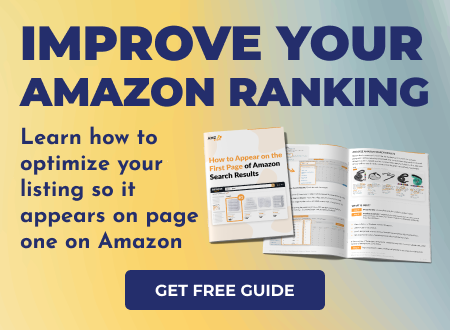
Front-Load Keywords
Amazon’s algorithm and mobile app layout tend to prioritize the first 80 characters of your product title. Therefore, to improve listing quality, place high-impact keywords, like brand name, product type, and defining features, at the very beginning. This optimization technique ensures that your product title aligns with best practices while grabbing the attention of both Amazon’s search engine and your customers.
Use Natural Language
One of the most important product title optimization techniques in 2025 is writing titles that sound natural to humans, not robots. While it’s tempting to cram every possible keyword in, both Amazon’s algorithm and your customers prefer clarity. An optimized Amazon product title should balance essential keywords with a clean, readable structure that quickly communicates what the product is and why it matters.
Think About Mobile Users
More than half of Amazon shoppers browse on mobile devices, so it’s crucial to keep product titles short, clear, and easy to scan. Long, cluttered titles get cut off on smaller screens, which can hurt both your visibility and conversions. To optimize for the mobile app, stick to essential keywords and front-load the most important details—this improves your listing quality and aligns with Amazon’s product title guidelines.
Test and Refine
Optimizing your Amazon product title isn’t a one-and-done task, it's an ongoing process. A/B testing offers a smart way to experiment with different title variations and see which one sparks the most interest. By tracking key metrics like click-through rates (CTR) and conversions, you can continuously fine-tune your title to align with what your customers are searching for. This iterative approach ensures that your product listing remains fresh, engaging, and primed to maximize both your visibility and sales.
Final Thoughts
In conclusion, mastering Amazon product title optimization is a crucial step toward boosting your listing's visibility and driving more conversions. By following Amazon’s product title guidelines and implementing best practices, such as front-loading high-impact keywords, ensuring clarity, and leveraging third-party tools like AMZScout, you can significantly improve the quality and performance of your product page. With the right keywords and optimized structure, your product title will not only stand out in a crowded marketplace but also increase your chances of attracting more clicks and ultimately driving sales.
FAQs
What is the character limit for Amazon product titles in 2025?
Most categories on Amazon allow up to 200 characters for product titles in 2025, but many recommend keeping titles under 150 for readability and mobile display. Always check category-specific guidelines to stay compliant and ensure your titles are both searchable and clear for shoppers.
Do keywords in product titles affect Amazon SEO?
Yes, keywords in product titles are one of the most important factors for Amazon SEO. Including relevant, high-converting keywords naturally improves search visibility, but you should avoid keyword stuffing, which can hurt readability and ranking. Focus on clarity and relevance for both the algorithm and your customers.
How do I write a product title that works on both desktop and mobile?
To optimize for both desktop and mobile, keep your title concise and front-load the most important details, like brand, product type, and key features. Avoid long strings of keywords and make sure critical information isn’t cut off on smaller screens to maximize clicks and conversions.
